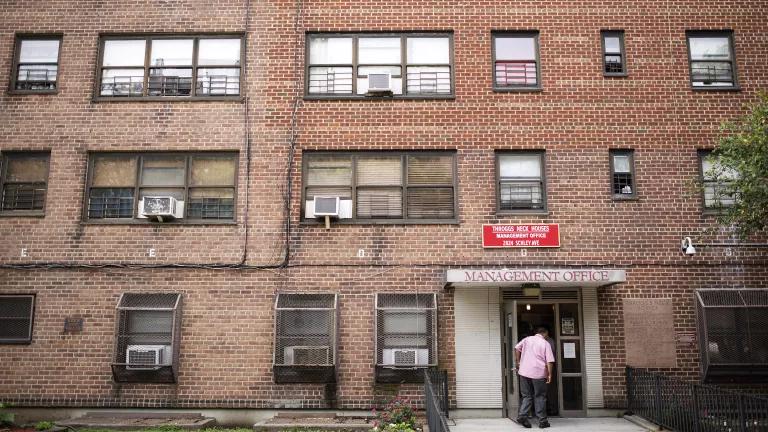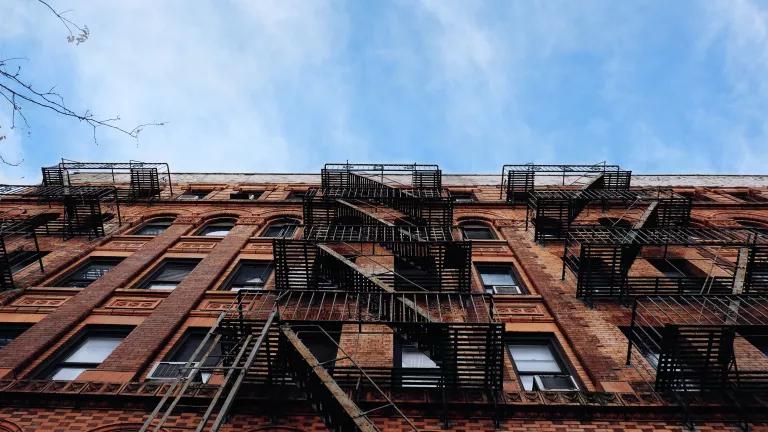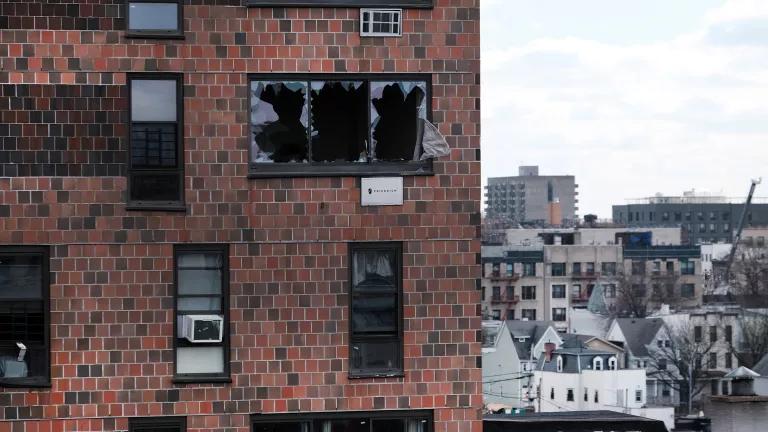On April 28, 2016, NRDC’s facilities team performed a waste audit of the New York office to measure the effectiveness of recycling and composting practices by staff. Data on contamination (improperly sorted waste) by bin (landfill, plastic/metal/glass recycling, paper recycling, and compost) were collected by two facilities team members and a group of staff volunteers. The waste audit indicates that composting, plastic/metal/glass (PMG) recycling, and paper recycling are largely effective (0.27 percent, 14.24 percent, 28.23 percent contamination respectively), while landfill waste management must be significantly improved (71.1 percent contamination). Our waste stream was 54.4 percent compostable, whereas only 42.1 percent of our stream was deliberately composted. By applying the observed contamination factors to historical data, the facilities team estimated that 6.23 tons CO2e were emitted in FY15 due to incorrect sorting of recyclables and compostables. Given the need for improvement, a set of waste-management improvement strategies in areas of assessment, educational opportunities, and incentives are recommended.
When it comes to energy efficiency, through NRDC’s real-time reporting software (Noveda), we are able to pinpoint opportunities for improvement and potential cost savings and report on the effectiveness of energy conservation measures (ECMs) once implemented. This analysis evaluated the aggregate benefits of four measures (set points and timing adjustments, boiler controls, air sealing, and an electric heater) and has found that they have resulted in a 30 percent reduction in heating energy and a 76 percent reduction in cooling energy, or roughly 13 percent of total electricity use, saving enough energy to power around 20 homes. Our cost savings were $34,000 to $43,000 annually on a total investment of $87k, resulting in a roughly two-year simple payback period, and an IRR of 36 percent. Excluding the set points & timing adjustments and looking at just those ECMs that required an investment, annual savings were $17,000 to $18,000, resulting in a roughly 4.5-year simple payback period, with an IRR of 7 percent.


